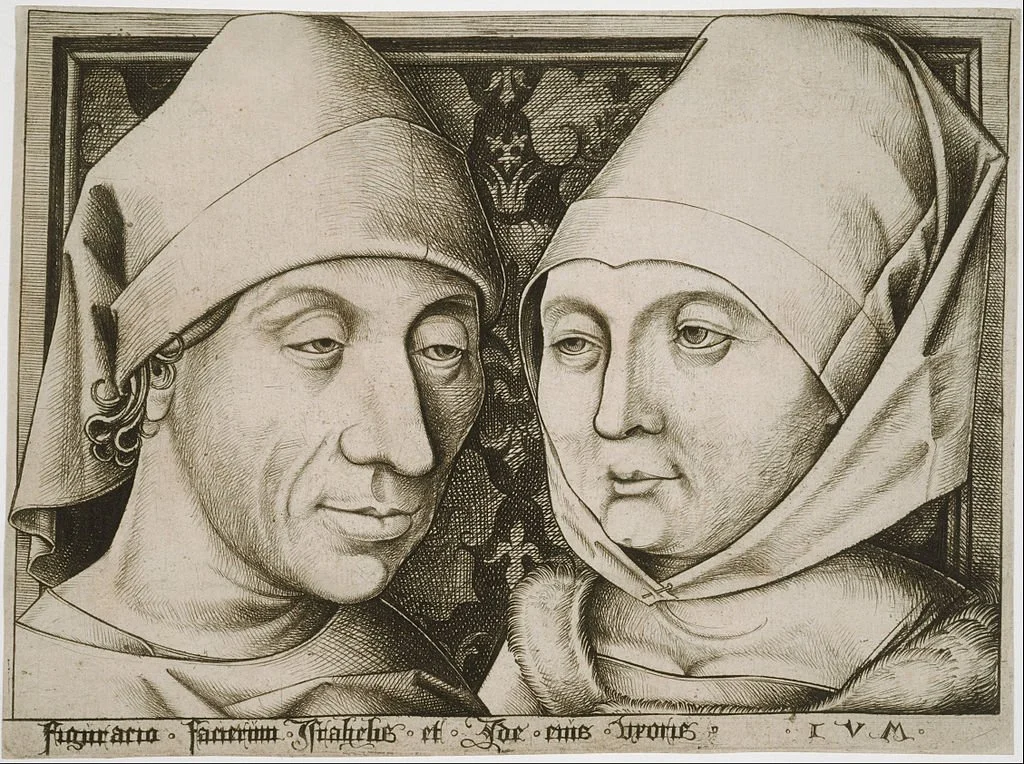Art of Enterprise: Israhel van Meckenem’s 15th-Century Print Workshop
Israhel van Meckenem, Self-Portrait with His Wife, Ida, ca. 1490, engraving. (image: Wikimedia Commons)
Art of Enterprise: Israhel van Meckenem’s 15th-Century Print Workshop is the first exhibition in the United States to present new research about the role Israhel van Meckenem (German, 1440/1445-1503) played in developing printmaking as a fine art . It features more than 60 objects from the Chazen’s own collection as well as from collections including The Albertina Museum, The Metropolitan Museum of Art, The Museum of Fine Arts, Boston and The National Gallery of Art (Washington, D.C.), and places Van Meckenem’s important engravings alongside images he copied from his contemporaries, including Master ES, Martin Schongauer and Albrecht Dürer.
“Israhel van Meckenem was the first printmaker to experiment with using his name as a brand or a trademark,” said exhibition curator James Wehn, the Chazen’s Van Vleck curator of works on paper. “‘Art of Enterprise’ presents a new opportunity to look at Israhel van Meckenem as not only a printmaker but an entrepreneur during a time when there was no concept of copyright or legal protections for intellectual capital like we have today. The works on view illuminate how longstanding copy culture collided with the new ability to replicate an image through printmaking and, as a result, prompted emerging concepts of authenticity and authorship.”
The exhibition explores the business of printmaking in the late 15th century, focusing on Israhel’s operation of a productive workshop during the initial rise of printed text and images in Europe. The engravings highlight Israhel’s primary audiences and the ways they used engravings. The exhibition will also explore his strategic use of materials like paper and copper, as well as the development of new products, including intricate ornamental designs, engraved indulgences, scenes of everyday life and the earliest printed self-portrait.
Regarded by some as more of an editor or publisher than an artist, many of Israhel’s prints are direct copies of works that were already in the marketplace. Except for minor changes, such as the repositioning of a limb or adjustments to small details in the background, Israhel produced works nearly identical to images by other artists and signed his name to the work.
“Art of Enterprise” includes the engravings “Saint Peter” and “Saint John” that were unknown to print historians until recently and are new to the Chazen’s permanent collection. Joined by “Saint Judas Thaddeus” from the same series of apostles likely produced around 1470, they appear alongside source material by Master ES on loan from The Albertina Museum in Vienna. Placing the works together will encourage close looking as visitors discover slight differences between Israhel’s depictions and Master ES’s work.
In contrast to the 21st-century practice of putting prints in frames for display, many of Israhel’s works were distributed throughout Europe and used in manuscripts, often of devotional nature. “Album with Twelve Engravings of The Passion, a Woodcut of Christ as the Man of Sorrows, and a Metalcut of St. Jerome in Penitence,” on loan to the Chazen from the Metropolitan Museum of Art, presents an example of Israhel’s Passion series in a bound prayerbook.
“In the late 15th century, when Israhel was copying existing images, the value was in the labor and the materials and not in the image. Today, we face similar questions about authorship and the value of intellectual capital with AI technology. ‘Art of Enterprise’ will present Israhel van Meckenem’s work and encourage visitors to consider concepts of originality that were called into question then and remain relevant in today’s digital world,” Wehn said.
